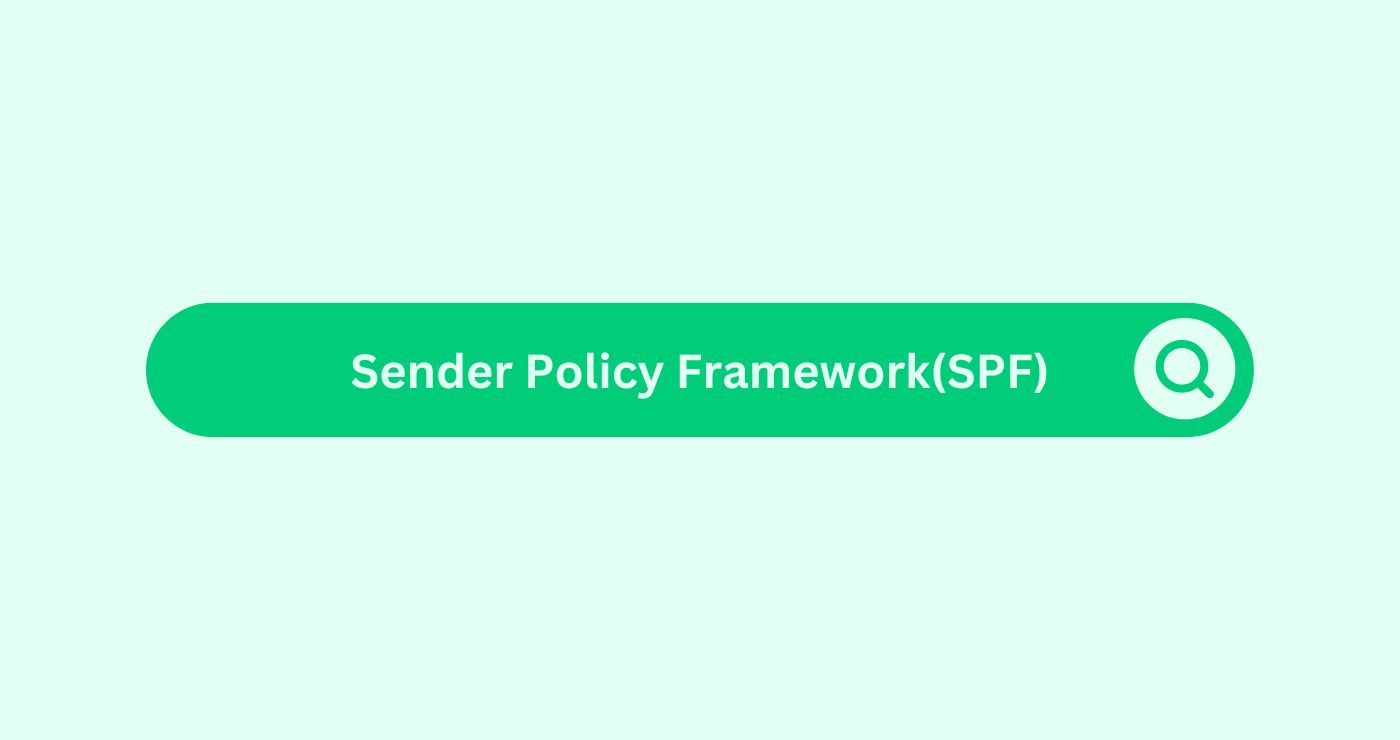Definition
SPF protocol fights email spoofingDefinition In email marketing, spoofing refers to the decept... by allowing authorised servers to send emails for a domain, enhancing Email security and delivery rates.
How You Can Use
To effectively use Sender Policy FrameworkDefinition In SEO, a framework is a structured set of tools ... (SPF) in Email MarketingDefinition
E-mail marketing uses targeted messages t..., follow these steps:
- Identify Authorised Mail Servers: Identify authorised mail servers for your domain. This includes your email service provider, your organisation’s mail servers, and any third-party services that send email on your behalf.
- Create an SPF Record: Create an SPF record that lists the IP addresses or hostnames of the authorised mail servers. SPF record added to domain’s DNS settings.
- Publish the SPF Record: Add the SPF record to your domain’s DNS settings. Typically done via the registrar’s control panel.
- Test the SPF Record: Utilise online tools to check SPF record configuration. These tools can also help you identify any potential issues.
- Monitor SPF Reports: Regularly monitor SPF reports to prevent unauthorised sending and verify email authenticity.
Example:
Imagine you own the domain “example.com” and you use multiple email services to send emails, including your own mail serverDefinition A Server in the SEO space refers to a computer sy... and a third-party email marketingDefinition
E-mail marketing uses targeted messages t... service. To set up SPF, you would create an SPF record that authorises these servers to send emails on behalf of “example.com.”.
An example SPF record for “example.com” might look like this:
makefileCopy codev=spf1 ip4:192.0.2.1 include:_spf.thirdpartyservice.com -all
In this record:
v=spf1indicates the version of SPF being used.ip4:192.0.2.1authorizes the IP address 192.0.2.1 to send emails for “example.com.”.include:_spf.thirdpartyservice.comauthorizes the servers listed in the SPF record for “thirdpartyservice.com” to send emails for “example.com”.-allindicates that emails from any other servers should be rejected.
Key Takeaways
- Prevent Email SpoofingDefinition In email marketing, spoofing refers to the decept...: SPF helps prevent spammers from sending emails with forged sender addresses.
- Improve Deliverability: Implementing SPF can boost email deliverabilityDefinition Email deliverability refers to the ability of an ... by verifying email legitimacy.
- Protect Brand Reputation: Implementing SPF can boost email deliverabilityDefinition Email deliverability refers to the ability of an ... by verifying email legitimacy.
- Enhance Email Security: SPF works with other authentication methods like DKIM and DMARC to provide a comprehensive email security solution.
- Monitor and Adjust: Regularly monitor SPF reports and adjust your SPF record as needed to ensure ongoing email authentication.
FAQs
What is Sender Policy Framework (SPF) in Email Marketing?
Sender Policy FrameworkDefinition In SEO, a framework is a structured set of tools ... (SPF) is an email authentication protocol used to prevent email spoofingDefinition In email marketing, spoofing refers to the decept... by specifying which mail servers are authorized to send emails on behalf of a domain.
Why is SPF important in Email Marketing?
SPF helps improve email deliverabilityDefinition Email deliverability refers to the ability of an ..., protect brand reputation, and enhance email security by preventing unauthorized use of your domain for sending emails.
How do I create an SPF record for my domain?
Identify the authorized mail servers for your domain, create an SPF record listing these servers, and publish the record in your domain's DNS settings.
Can SPF alone prevent all email spoofing?
No, SPF is one part of a comprehensive email authentication strategy. It is most effective when used in conjunction with DKIM and DMARC.
What does an SPF record look like?
An SPF record is a DNS TXT record that includes the version of SPF, authorized IP addresses or hostnames, and policies for handling unauthorized emails.
How do I test my SPF record?
Use online SPF testing tools to check the correctness of your SPF record and to identify any issues that need to be resolved.
What happens if an email fails SPF validation?
If an email fails SPF validation, the recipient's mail serverDefinition A Server in the SEO space refers to a computer sy... may reject the email or mark it as spam, depending on the configured policies.
Can I include third-party services in my SPF record?
Yes, you can include third-party services by using the include mechanism in your SPF record to authorize their servers.
How often should I update my SPF record?
Update your SPF record whenever there are changes to the mail servers authorized to send emails on behalf of your domain.
What are the limitations of SPF?
SPF has limitations, such as not working well with email forwarding and having a limit on the number of DNS lookups. These limitations can be mitigated by using DKIM and DMARC in combination with SPF.




